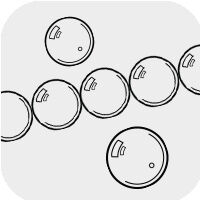Petrified Wood
Meaning and Properties
Petrified Wood History
Petrified wood is often considered a sacred heirloom from the past, as it begins by encapsulating ancient plant material like the giant sequoias or other primeval trees. It is thought that ancient ancestors of Italy, the Etruscans, used petrified wood to create handmade religious objects. Contemporary followers of Etruscan traditions now think of petrified wood as a window to the past, using it to recollect ancient memories.
Petrified Wood Metaphysical Properties
Many believe in the use of petrified wood in assisting with atrophied muscles and vulnerable skeletal structures by stabilizing the body’s defenses. It is thought to promote balance and calmness, allowing the body to heal in a relaxed, de-stressed environment. As a product of once living material, the gemstone is often viewed as a sacred representation of humankind's connection to the universe. Just as the stone undergoes a dramatic transformation, petrified wood encourages openness to personal transformations as well. Regardless of metaphysical beliefs, the stone can be a representation or reminder to embrace change and/or uncomfortable feelings on your journey to new beginnings.
Petrified Wood Geological Properties
From the Latin word petro meaning "rock" or "stone", the name petrified wood translates to "wood turned to stone." During the process of petrification, plant debris is covered with sediment material. This sediment protects the debris from decaying under environmental stressors such as oxygen, rain-water, animals, bacteria, etc. Over time, the build-up of sedimentary material begins to harden around the plant material. Eventually, ground water that is saturated in dissolved rock material flows through the sediment and the plant material is replaced with minerals such as silicate. This process creates a fossilization of the wooden material at the microscopic level and mineral replacement resulting in the appearance of wood, tree rings, and other recognizable wood features known as petrified wood. The mineralized replacement is most often a quartz chalcedony. Most commonly found forms of petrified wood are gray and/or brown in color. Although, rarer varieties are seen to preserve exotic minerals with a green or red hue. Petrified wood is frequently sourced from Argentina, Australia, Brazil, Canada and China.
|
|
|
|
|
|
|
|
|
|
|
|
|
|
|
|
|
|
Proper Care of Petrified Wood
Petrified wood is durable enough (7 on the Mohs scale) to be cleaned using ultrasonic cleaners or steamers. Avoid the use of bleach and other harsh household cleaners and be sure to rinse your stones well to ensure all soapy residues are removed.
To learn more about petrified wood and other gemstones, order your copy of Walter Schumann's revised and expanded edition of Gemstones of the World.
Designing with Petrified Wood
Petrified wood is a beautiful option for nature or cultural-inspired designs. Easily versatile in its use, it can be incorporated into contemporary or unique styles. A great addition to summer and spring necklaces, bracelets or earrings for a down-to-earth style.
View more resources featuring petrified wood, including Design Ideas, Videos, Tutorials and more!
Shop for Petrified wood
**Please note that all metaphysical or healing properties listed are collected from various sources. This information is offered as a service and not meant to treat medical conditions. Fire Mountain Gems and Beads® does not guarantee the validity of any of these statements.
How did you like this resource? Your feedback helps us provide resources that matter to you most.
Copyright Permissions
All works of authorship (articles, videos, tutorials and other creative works) are from the Fire Mountain Gems and Beads® Collection, and permission to copy is granted for non-commercial educational purposes only. All other reproduction requires written permission. For more information, please email copyrightpermission@firemtn.com.

